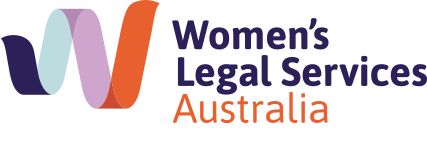Women’s Legal Services Australia (WLSA) welcomes the opportunity to provide a submission on Enhancing Civil Protections and Remedies of Forced Marriage. We are pleased to see the Commonwealth Government’s focus on strengthening Australia’s response to forced marriage.
Women’s Legal Services across Australia assist women who are in forced or arranged marriages and are experiencing domestic and family violence. One of our members, Women’s Legal Service Victoria, estimates 20 percent of their clients assisted with migration matters have experience forced marriage in their life. In their experience, a typical client will have been forced into marriage at a young age and has then subsequently arrived in Australia on a partner, spousal or carer visa.
In our experience, most clients seek legal assistance after the marriage. Some of our clients have reported being forced to marry because their sexuality is not acceptable in their home country.
It is our view that forced marriage should be explicitly recognised as a form of family and domestic violence in State and Territory legislation, as well as Commonwealth legislation, such as the Family Law Act 1975 (Cth).[1] Unlike other forms of modern slavery (such as labour exploitation, debt bondage or domestic servitude), it is our experience that forced marriage is often perpetrated by a family member.
In our experience, forced marriage is strongly linked with other forms of family violence including sexual abuse, physical and economic abuse, as well as within the broader context of coercive control. Women in forced marriages require similar supports to other victim-survivors seeking to escape coercive and controlling relationships.
Women in forced marriages are particularly vulnerable to extreme forms of coercive control and family violence. There are significant barriers and risks that prevent help seeking.
Women in forced marriages have limited opportunities for education and economic independence. In our experience, clients in forced marriages are often expected to focus on maintaining the marriage rather than pursuing their own goals.
Leaving a forced marriage may result in family support being withdrawn, increased safety risks, isolation, poor mental health, impacts on spiritual and cultural connections, homelessness and poverty.
While explicitly recognising forced marriage within legislative provisions will strengthen options for remedy, we note that our client’s experiences of family violence within forced marriage contexts already meet relevant thresholds for the forced marriage to be considered a form of family and domestic violence.
In our view, while a shared understanding of forced marriage can and should be achieved through legislative change, increased access to family and domestic violence services must be the priority. This can only be achieved through significant investment, particularly in gender-specialist services such as Women’s Legal Services.
While WLSA is supportive of recent government commitments including the new Forced Marriage Specialist Support Program, it is notable that commitments announced do not address the barriers to accessing specialist services.
Based on recent data collected by WLSA, we estimate 1,000 women are turned away from Women’s Legal Services across Australia each week due to lack of resources and capacity to assist, including victim-survivors of forced marriage. In our view, it is only with increased capacity across the system, including to wraparound legal and support service providers such as Women’s Legal Services, that victim-survivors will have the appropriate supports they need to leave forced marriages and experience safety and economic independence.
[1] Section 4AB Family Law Act 1975 (Cth).


